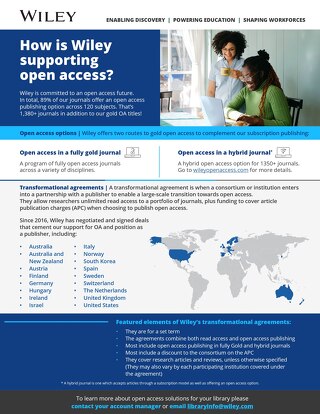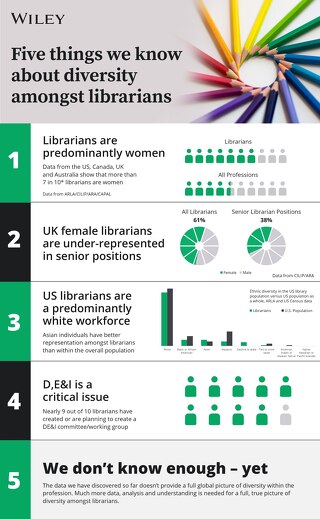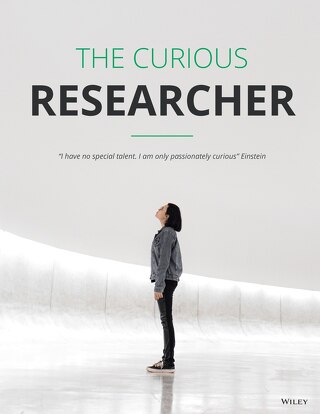top-10-trends-at-the-2018-electronic-resources-libraries-er-l-conference
March 19, 2018
“Do we know what we are paying for?”
At this year’s 2018 Electronic Resources and Libraries (ER&L) Conference, attendees continued to grapple with the ever-pressing question of how best to leverage data to determine the efficacy of the resources wherein they invest their hard-earned budget dollars.
What factors affect the decision to add, keep or cut resources? Who makes the decisions?
“Without good data, we’re flying blind.”
Understanding the metrics behind the library’s resources is critical to making key decisions that affect collection development and acquisition.
Beyond the numbers, this year’s conference also focused on other trending topics, including understanding the needs of today’s researchers and adapting to change in a rapidly evolving environment.
Check out these top 10 trends from ER&L 2018:
1. Librarians continue to combat “fake news”
At a time when published “facts” have been called into question more than ever before, librarians continue to reaffirm their commitment to providing accurate and reliable electronic resources to their researchers. What’s more, these experts in online content, technology and media are arming students and researchers with the tools necessary to spot “fake news,” exercise fact-checking and use the internet in an intelligent, discerning way.
2. “Are media platforms publishers, and why does this matter?”
A researcher at the Data & Society Research Institute, keynote speaker Robyn Caplan highlighted the fact that “67% of Americans are getting their news from sources like Facebook,” emphasizing the increasing trend of media companies “moving into new media types, using platforms to gain info about their audiences and use ads, shifting models to respond to data that they are receiving.”
As a result, media is becoming more like technology platforms while technology platforms transition towards the role of publisher, forming “editorial boards” that leverage user analytics to determine what they publish. Librarians and data experts agree that the power and influence of these sources are worth exploring, and they are looking into how the boundaries of electronic information can be re-drawn.
3. “We stand to benefit enormously as a profession if we can quantifiably validate what we feel is our value.”
While librarians continue to make strides in articulating their value to campus stakeholders, it’s often more difficult to put in quantifiable terms. However, the electronic resource librarians and digital-savvy staff attending ER&L have a leg up in this arena, using their numbers-driven mindset and access to countless reports to offer best practices to advocate for not just adequate, but abundant funding.
In the words of speaker Alice L. Daugherty, Coordinator of Acquisitions & E-Resources at the University of Alabama, librarians are “better equipped today, now more than ever, to demonstrate the value of libraries […] we have so much more data that proves what we are buying today is tremendously useful, and that’s where we can begin our narrative and master our elevator speech: our value proposition.”
4. Thinking outside of the box to identify student pain points
As they continue to evolve their services in line with user needs, librarians are experimenting with different methods to learn about student pain points and identify opportunities to help.
In one such example from the conference, two librarians shared a recent study that asked students to draw their typical research workflow. The exercise aimed to illuminate opportunities for library intervention based on criteria like stress-level, timing and overall awareness of library resources.
For instance, one critical result revealed that while 36% of students included “help-seeking” in their research process, most participants specified that this help was sought from a peer, significant other or family member--not the library. By carefully dissecting each drawing, these librarians were able to gain a little more insight into their patrons’ mindsets and workflows, enabling a more strategic, focused approach to instruction and outreach.
5. Getting creative with outreach
As students are increasingly likely to access information resources remotely, librarians are exploring new ways to get in front of their users outside the library’s walls.
Conference discussions facilitated the exchange of ideas, including the creation of e-newsletters to promote events, programs and training, starting peer research help programs, setting up online help services, distributing more e-learning materials (DIY pages, tutorials, etc.), working with Marketing and Communications specialists and collaborating with different campus support services.
6. Librarians work hard – and deserve acknowledgement
While most librarians are aware of their positive influence on researchers and their institutions, it can be difficult to avoid feeling over-worked and under-valued in a role that’s largely been kept behind the scenes. One session poignantly tapped into this feeling of “workplace alienation,” highlighting five measures, including powerlessness, normlessness, meaninglessness, self-estrangement and isolation.
For so many librarians whose jobs center on numbers, data, statistics and excel spreadsheets, the sense of community felt at conferences like ER&L serves to remind them that they are not alone and that they matter. Not only are these discussions critical to facilitating a sense of solidarity, but they also help raise awareness and encourage supervisors, managers and administrators to continue to improve upon the library work environment.
7. “This is about the culture going on inside your library.”
Despite the unprecedented amount of data librarians have been able to collect and analyze, “when it comes to e-resources, there are a lot of things [librarians] still need to understand and help other people understand.”
This theme of constant evolution pervaded this year’s conference, capturing the “need to be changing toward a culture of communication.” For this fundamental shift to be successful, librarians widely acknowledged that it’s necessary to have support from organizational leaders—both within institutions themselves as well as from publishers and vendors that help explain how to use and leverage new products.
8. “Early Stage Research is increasingly seen as proof of progress and central to scholarly sharing practices.”
One of the foremost tenets of today’s modern academic library is the enablement of collaboration, exchange and productivity amongst students and researchers. Facilitating the interdisciplinary exchange of early-stage research ideas not only spurs more innovative research, but it also makes research the focus, as people can more easily work together to avoid duplication, narrow perspectives and increase efficiency.
One major takeaway of this year’s conference is that whenever and wherever they can, librarians must work towards bringing researchers together and encouraging the exchange of ideas early on in the research process.
9. Librarians share tips for improving user experience
While many themes emerged from ER&L 2018, a common denominator across the board was a laser-focus on the user. Through student surveys, persona development, interviews and usability testing, librarians are steadfast in their commitment to understanding patron behavior and adjusting electronic services and resources to meet their needs accordingly.
Further, librarians discussed the need to avoid “library-ese,” the high-tech, data-driven language many librarians default to naturally, and relate more to users by replacing terms like “DRM-free” and “full-text” with more accessible phrases like “unlimited” and “view online”. These basic yet fundamental modifications allow librarians to communicate with users more effectively and enable closer alignment to their needs.
10. Information is power
If we could boil down ER&L 2018 to one critical conclusion, it would be that librarians recognize the need to leverage data more than ever to make the most-informed decisions possible. From collection development and acquisitions to reaching students and evolving library culture, librarians are proactively pursuing new opportunities to increase their value more than ever before.
The passionate exchange of best practices, sharing of challenges and celebrations of success stories at ER&L 2018 is yet another reminder of not only the commitment of librarians to their patrons, but just as importantly, to the profession and each other.









